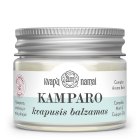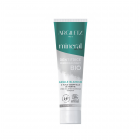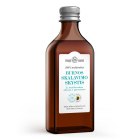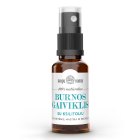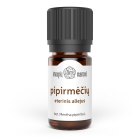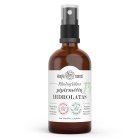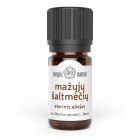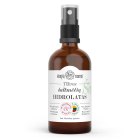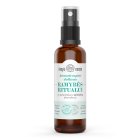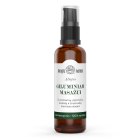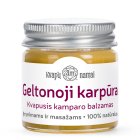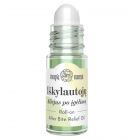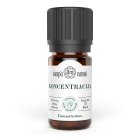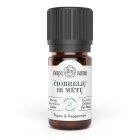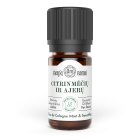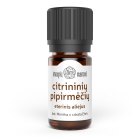Not all mints are equal. It is not a single plant, but a whole botanical universe with different active compounds, flavours, properties and stories.
Here you will find products that share a refreshing, sometimes even pungent cold scent, and a refreshing, toning, energising, "on your feet" effect.
At KVAPŲ NAMAI, we invite you to discover the four types of mint most commonly used in aromatherapy, from the cooling peppermint (M. piperita) and cornmint (M. arvensis) to the florally refreshing spearmint (M. spicata) and Bergamot mint (M. citrata).
What makes peppermint and cornmint special, and what they are used for:
- to give a fresh feeling in the mouth, to improve oral hygiene in the form of mouthwashes, rinses, refreshers (we highly recommend our "Mouthwash" and our"Mouth freshener spray"
- to provide a feeling of freshness and coolness to the whole body in general or just to the head, legs, etc., e.g. during hot summer day
- revitalise, banish fatigue, improve stamina in sports, physical or travel activities (we strongly recommend the "Camphor Balm")
- to maintain alertness, alertness and attention - vaporise in diffusers, use in aromasticks, sprays, in the car during long journey
- to reduce nausea
- to relieve a heavy head - we strongly recommend "Camphor Balm"
- for relieving itching, local pain - has a cooling effect; spray with peppermint hydrolat, apply creams, ointments, oils, balm "After stings"
- to increase hair lushness
- to reduce abdominal discomfort
- for muscle tension and pain relief - 1-5% concentration in massage oils, we recommend"Camphor Balm Yellow Carpura"
- for bronchitis, sinusitis; for cough and cold symptoms, various spasms - evaporate in diffusers, use in the aromastics, drink the hydrolate 1-3 tablespoons, 2-3k/day; apply hydrolate compresses
...................
Mentol-free mints provide not a chill, but delight with lemonady coolness, even a floral freshness. Lovely familiar scents lift the spirits, gently soothe the skin and have anti-inflammatory properties.
Spearmint essential oil, Mentha spicata
We call it carvonic mint. Although it is called cold mint, it does not leave a sharp cold sensation in the nose and mouth because, unlike peppermint or cornmint, the oil is not dominated by menthol and menthone, but rather by carvone (>50%), limonene (>20%), a few percentages of eucalyptol (1.8 cineole), and a menthol content of <1%
- smells sweet, fresh and candy-like, appealing to almost everybody and very suitable for indoor scenting
- the effect on the nervous system is more calming than tonic - try our SERENITY MIST with spearmint essential oil (No 1 for summer)
- refreshing, gently cooling
- anti-inflammatory
- mucus thinner
- liver, bile and digestive tonic
Bergamot Mint essential oil, Mentha citrata, Bergamot mint, Eau de Cologne Mint
We call it linalolic mint. It is the mildest of all mint essential oils, with a harmonious floral-lemony-bergamot scent with just a hint of mint, which is why it is known as the cologne mint. Because it produces almost no menthol, menthone or other 'minty' compounds. The essential oil is dominated by linalool (~40%) and linalyl acetate (~30%), similar to lavender or bergamot, which is why this mint is also known as bergamot mint or lemon mint.
- Helps to restore emotional balance in restless children and adults,
- Raises mood
- Relaxes spasms and tensions
- Male sexual tonic
